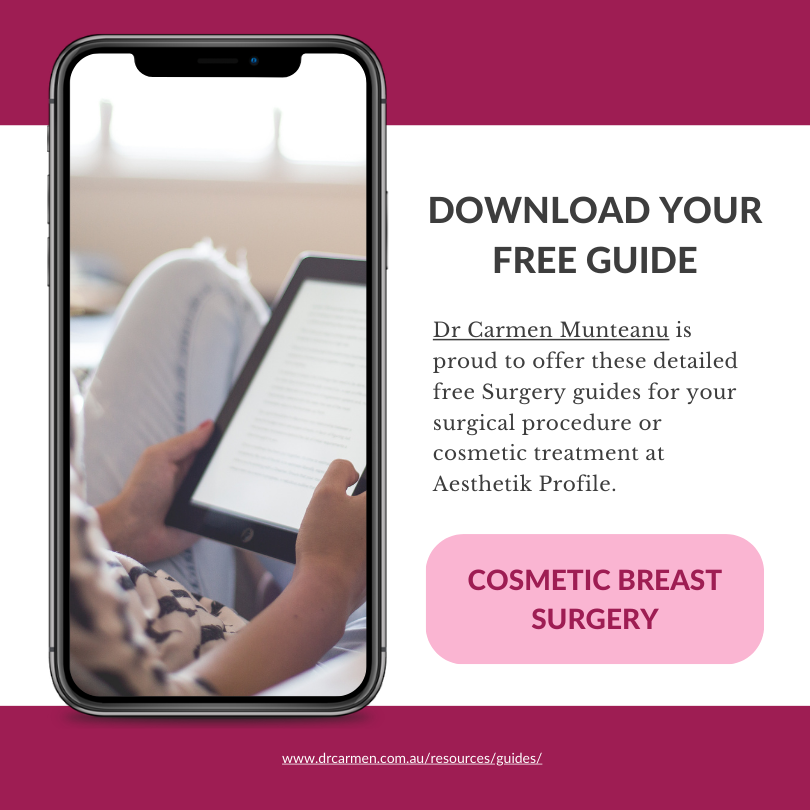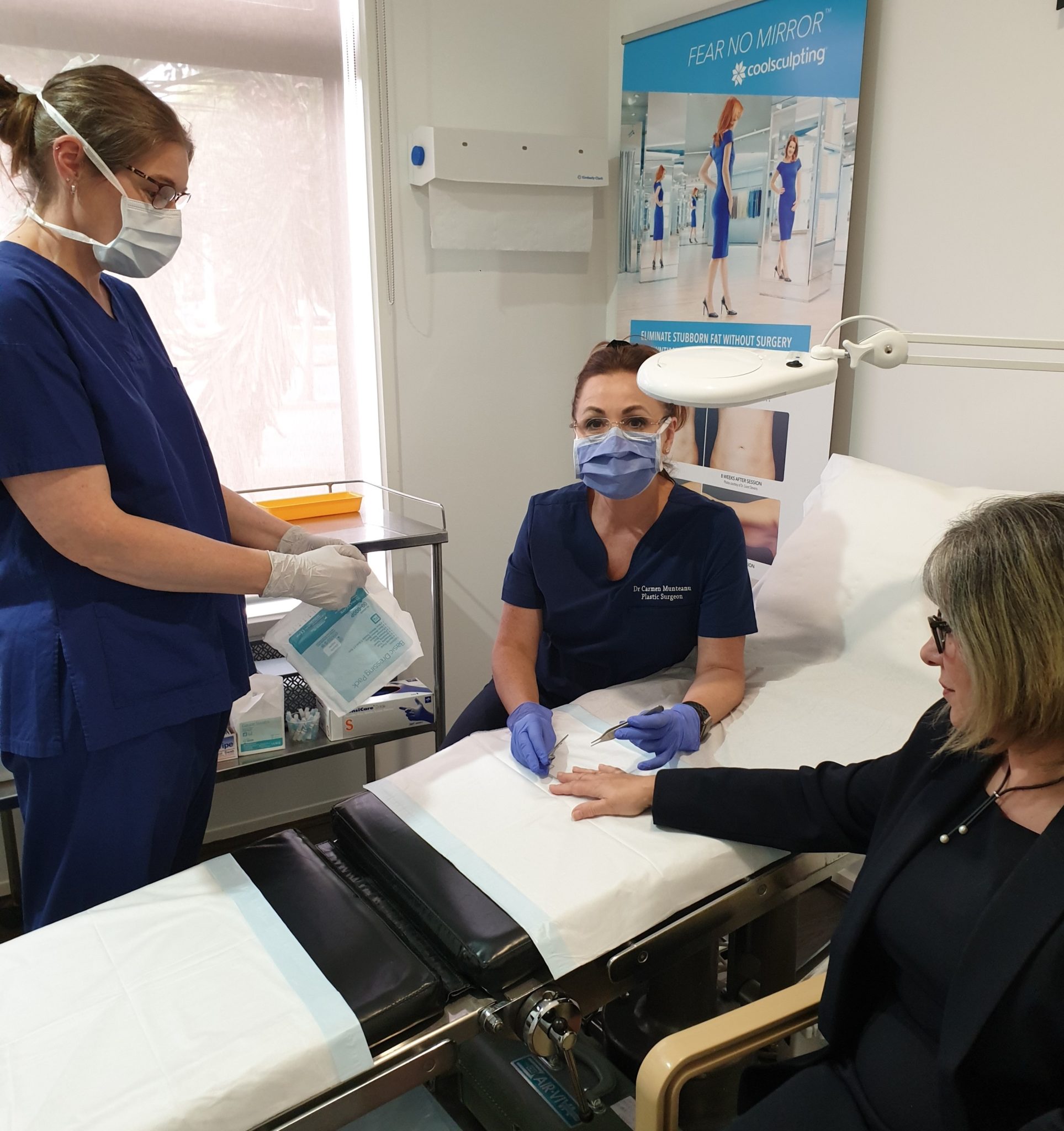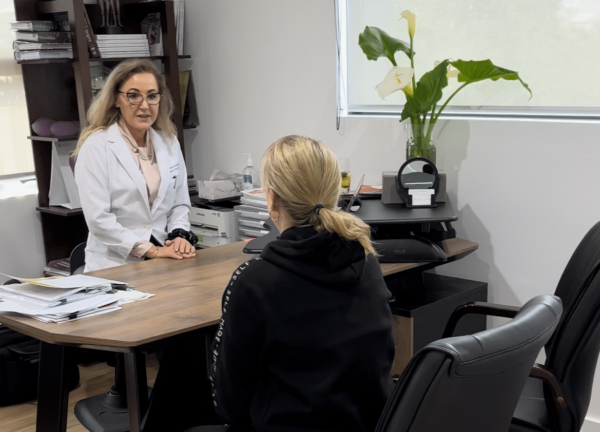Breast Anatomy – What you need to know before Breast Surgery?
Physical and mental health has been a hot topic these days. However, there is still a need to understand the human body more. This article will discuss the breast anatomy, deformities, and surgeries needed to have a healthy, functioning, and aesthetically perfect breast. Dr Carmen Munteanu is a Top Melbourne Specialist Plastic Surgeon performing breast procedures on a regular basis.
Take our Plastic Surgery Quiz to find out if you’d be a good candidate and if you are ready for cosmetic surgery.
The Female Breast – What is it made of?
Breast anatomy is about learning the parts that make up the breasts.
The female breast anatomy is composed of the following:
- Nipples
- Areolae
- Lobes
- Milk Ducts
- Adipose tissue
- Glandular tissue (lobules)
- Nerves
- Blood vessels and lymph vessels
The Male Breast – How about the male breast?
Testosterone makes the male breast to stop growing like the female breast. However, males also have nipples and areolas. They also have milk ducts although these are undeveloped since they will not need to produce milk. While the male breasts often don’t look the same as feminine breasts and they don’t serve the same purpose, it can happen for men to suffer from gynecomastia – a condition characterized by feminine-looking breasts.
Breast Anatomy – What does the perfect breast look like?
There is no such thing as the ideal breast – and this is OK as there are so many shapes, sizes and consistencies, it would be difficult to have just one perfect breast. The definition of the perfect breast anatomy is different from one person to the other. When defining your notion of perfect you probably mention characteristics of the nipple/ areola complex, size, shape, position on the chest wall and even how hard or soft are the breasts. Upper/ lower pole volume could also come to mind when defining the perfect breasts.
Nipple Areola Complex
The nipple-areola complex is the most prominent area of the breast. Each pair of breasts are different in many aspects: dimension, texture, and even colour. Commonly known as the areola, it is the pigmented skin found around the nipple. The colour usually depends on race and genetics. It can either be pink, red, brown, or black.
Several other parts of the breast are connected to the nipple-areola complex, including the glands and sensory nerve endings
Upper and Lower Pole of the Breast
The upper pole is located above the nipple while the lower pole is below the nipple. It refers to the ratio of where the nipple should be positioned. Several types of research regarding the ideal ratio of a female’s upper and lower pole were made and most of the correspondents agreed to a 45:55 ratio, with the 45% found in the upper pole and the remaining 55% would be found in the lower pole.
Breast Issues and Surgical Solutions
After understanding a bit about breast anatomy, it is time to find out about several breast problems and the ways to fix them surgically.
The following problems can affect women and/or men:
- Pigeon chest
- Symmastia or Uniboob
- Breast cancer
- Gynecomastia or Feminine-looking breasts in men
- Saggy and/or heavy breasts
Download Dr Carmen’s Ultimate Guide to Cosmetic Breast Surgery

1. Pigeon chest
Pigeon chest is when certain parts of the chest are not properly formed—the cartilage, the breastbone, and ribs are affected in turning the chest abnormally pushed outward. The deformity isn’t that obvious at first, showing the signs until puberty when growth and development rapidly increase. Symptoms of this deformity include pain found in either the chest, ribs or back. Shortness of breath can also happen, and the psychological effects could occur as a result of the aspect of the chest. To diagnose this problem, one must undergo a series of testing such as a chest x-ray or a CT scan, to mention just a few.
Solutions for Pigeon Chest?
Most mild cases do not require the need for surgery to correct it, opting for chest-wall bracing that would eventually mold or help the deformed bones push inward instead of outward. If the problem is much more severe, then the only choice would be to go for a modified Ravitch surgical repair.
The reconstruction process
A chest-wall bracing, similar to the concept of retainers for the teeth, is applied. But in this case, the brace is for the chest. Once a patient is diagnosed with a pigeon chest, the doctor would recommend that they would wear the brace for a significant number of hours per day. But if the patient is okay with wearing it for a longer time then it would speed up the process of healing or keeping the chest at the proper angle.
As for the Ravitch surgical repair, a surgical cut is made along the chest wall over the sternum. Then the surgeon would have to remove the cartilage around the area of the deformity, along with the sternum before repositioning it. There are times where a small metal bar is also placed underneath the sternum to support the bone, staying there for at least two years to help solidify the sternum.
2. Symmastia – What is it?
Another breast problem would be symmastia, also known as uni-boob. The condition is characterized by a web of tissues between the breasts. This condition might cause little to no space between the breasts. This means that the breasts might look like they are one.
Symmastia can be congenital which means that you are born with it. The cause is still unknown. This condition can also be acquired which means that it might have been a complication of surgery. The reason for this displacement could be that the implants inserted are not the right size, meaning it could have been too large for the pockets. the attached pockets.
Solutions for Symmastia?
There are different surgical solutions to treat symmastia, depending on the complexity of each case and what caused it in the first place. The typical solution would be replacing the implants with smaller ones. The surgeon would then be reattaching the skin that was removed from the sternum through internal stitches.
3. Mastectomy and breast reconstruction surgery
Mastectomy refers to the surgery that removes the mammary gland tissue from the breast as a way to either treat or prevent breast cancer. In order to rebuild the breast tissues, breast reconstruction surgery is one of the options considered. Reconstruction surgery is when a surgeon uses either an artificial implant or a flap of tissue from another place on the body to create a breast shape.
If the nipple and areola are removed during the mastectomy, it can be recreated in the final stage of the reconstruction.
The Breast Reconstruction Process
Skin sparing mastectomy is a technique usually done to save the skin for future reconstruction. It depends on the cancer stage and condition and whether the surgery is contraindicated or not. In this technique, implants are used and inserted under the skin. Implants can be directly placed during the mastectomy if the condition permits. However, some techniques imply a two-stage procedure.
- Stage 1 – a tissue expander will be inserted under the skin. This expander is filled with saline solution during scheduled visits after the surgery.
- Stage 2 – Two to six months after mastectomy and once the surrounding tissue is settled and healed, the expander is then removed and is changed with an implant.

4. Gynecomastia in men and male breast reduction
A common breast condition occurring in men is called gynecomastia. Gynecomastia means there is an increase in the amount of breast gland tissue found in boys or men. It can occur on one or both breasts. It could go away on its own but if it occurs late in life, the optimal solution is breast reduction or gynecomastia surgery.
Solutions for Gyno?
Breast reduction surgery can remove excess fat, tissue, and skin from the breasts. Women choose to undergo this procedure to get rid of the issues associated with overly large breasts. Among them we can mention back, neck and shoulders pain, abnormal body posture, inability to easily perform simple activities such as running.
Gynecomastia procedure is similar to the breast reduction surgery in women. The intervention is performed with the patient under general anaesthesia. Hence, there is no pain or discomfort to be experienced during the intervention. The breast reduction surgery is a pretty complex procedure. The incisions are usually positioned in the fold under the breasts, but also around the nipples and vertically from the nipple to the inframammary fold.
The plastic surgeon aims to eliminate all excess tissue and create even breasts that are proportionate to the rest of the body.
5. Saggy or Ptotic Breasts – How to get perky breasts
A common sign of aging is skin sagginess. With the natural aging process, we tend to lose volume from the level of certain areas, such as the breasts. Pregnancy and breastfeeding are other factors that could cause the breasts to droop and look deflated and empty. The abnormal, low position of the breasts on the chest wall is corrected with the help of a breast lift surgery.
Solutions for Sagging Breasts?
Did you think that getting breast implants/breast augmentation surgery can help you with the saggy breasts? Well, this is possible in rare cases. Most often, the plastic surgeon will recommend a breast lift surgery to correct the issue. You can also have a breast lift with implants for increased upper pole fullness..
During a breast lift procedure, the surgeon raises and reshapes the breast so that it would look much firmer and rounder. This surgery could also remove the extra skin found around the areola. The patient may or may not have implants added to achieve the ideal breast one would like to have.
More Information about other Breast Procedures:
Book a Consultation with Dr Carmen
Are you considering breast surgery? Get in touch with us to schedule a consultation with Dr Carmen.






